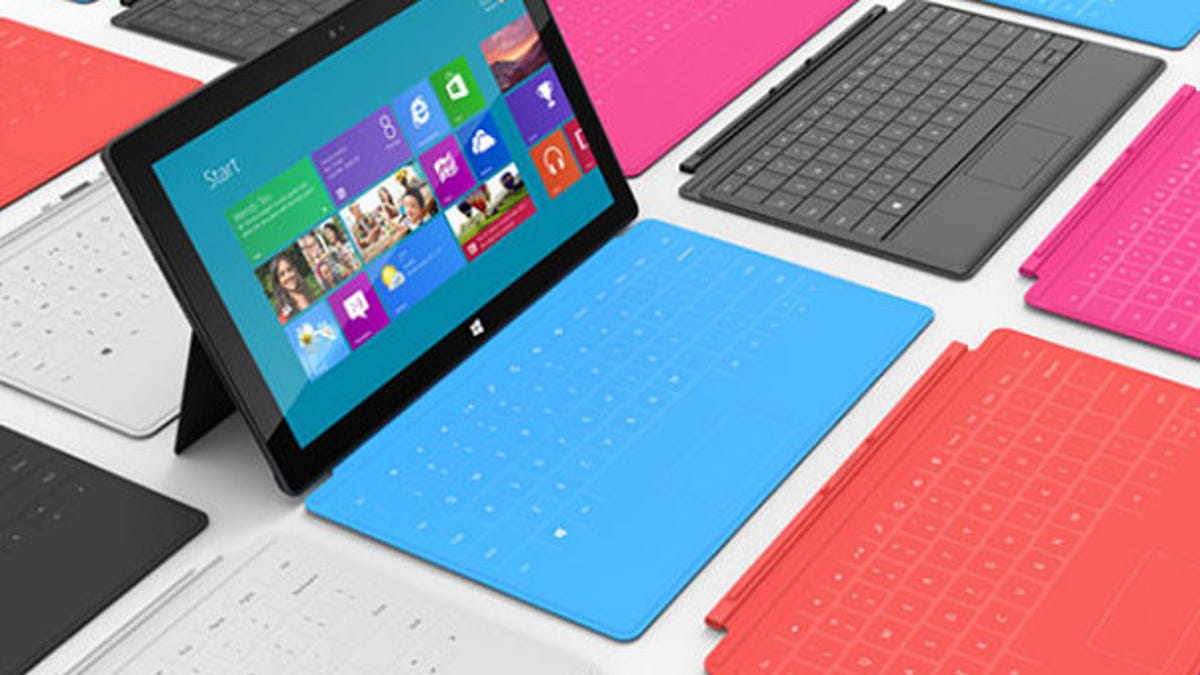Microsoft: Surface beats the iPad in display quality
A Microsoft engineer tries to explain why he believes the display found on the Surface RT tablet is superior to that of the iPad even with a lower resolution.

Microsoft's Surface RT has a better display than does the iPad -- that's the case being made by one of the tech gurus behind the new tablet.
At a Reddit IamA held yesterday, Microsoft engineers who worked on Surface answered questions about the tablet.
One question asked how users might consider Surface versus the iPad in light of their different screen resolutions. Surface for Windows RT offers a resolution of 1366x768 while the current iPad delivers a resolution of 2048x1536.
Microsoft's Steven Bathiche quickly chimed in to address that issue. Bathiche is the director of research for the company's Applied Sciences group and as such added his expertise to the development of the tablet.
Referring to screen resolution as only one element affecting detail seen on the screen, Bathiche talked up a technical measurement called Modulation Transfer Function, which he described as a combination of contrast and resolution. "Without good contrast, resolution decreases," said Bathiche.
And in this area, Surface apparently gets the edge as a result of Microsoft's ClearType display technology.
"The amount of light in a room and the reflections off the screen have a huge effect on the contrast of the display," Bathiche said. "In fact, a small amount of reflection can greatly reduce contrast and thus the perceived resolution of the display. With the ClearType Display technology we took a 3 pronged approach to maximize that perceived resolution and optimize for battery life, weight, and thickness."
Looking at Surface, though not officially, Bathiche said the amount of light reflected off Microsoft's tablet was measured at around 5.5 percent to 6.2 percent. In contast, the light reflected off the iPad was larger at 9.9 percent.
"Doing a side by side with the new iPad in a consistently lit room, we have had many people see more detail on Surface RT than on the Ipad with more resolution," Bathiche added.
However, another person challenged Bathiche, asking why Microsoft opted for a higher resolution in the Windows Pro version of Surface.
Here, Bathiche didn't even answer the question. But a Reddit user chimed in, saying that perhaps Microsoft wasn't as concerned about preserving battery power. He also suggested that since the Pro version is designed for a "professional environment," the extra screen space might be needed by people making presentations.
Naturally, Bathiche is going to tout his own company's product as superior to other tablets. Without seeing the Surface tablet and the latest iPad side-by-side, it's hard to tell for sure how much validity his argument has.
And though screen quality is important, it's only one factor that consumers and companies will weigh when deciding whether to give the Windows 8-based Surface a shot or opt for an iPad.
Corrected 10/18 11:45 a.m. PT: Bathiche didn't respond to question about the Pro version; a Reddit user did.
See also:
Screens test: Apple iPhone 5 vs. Samsung Galaxy S3

